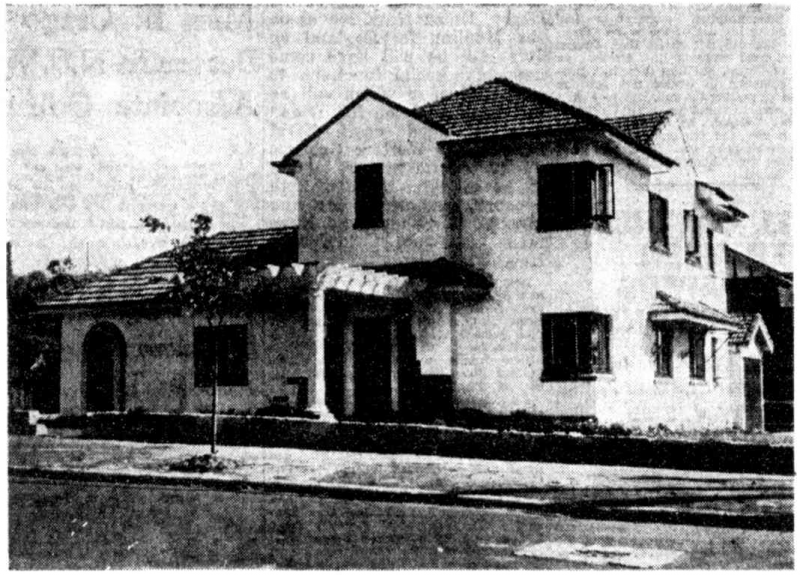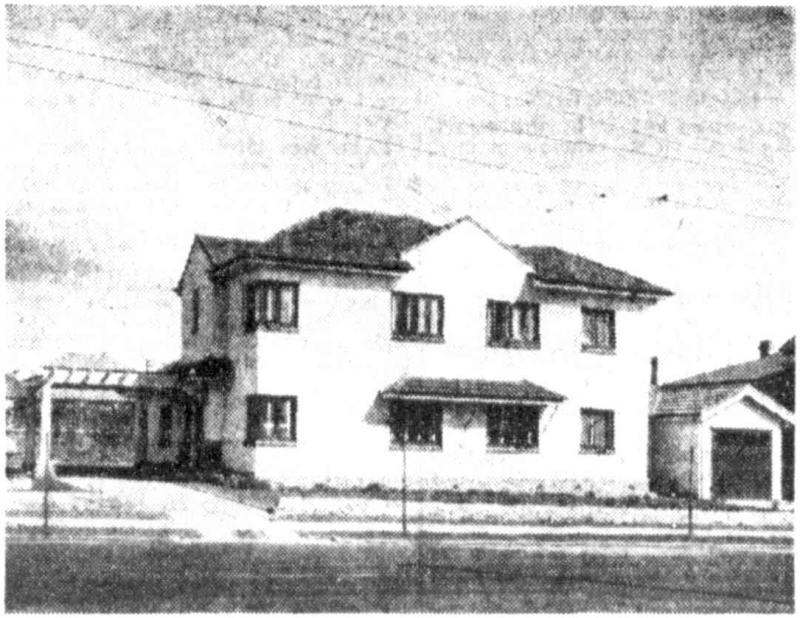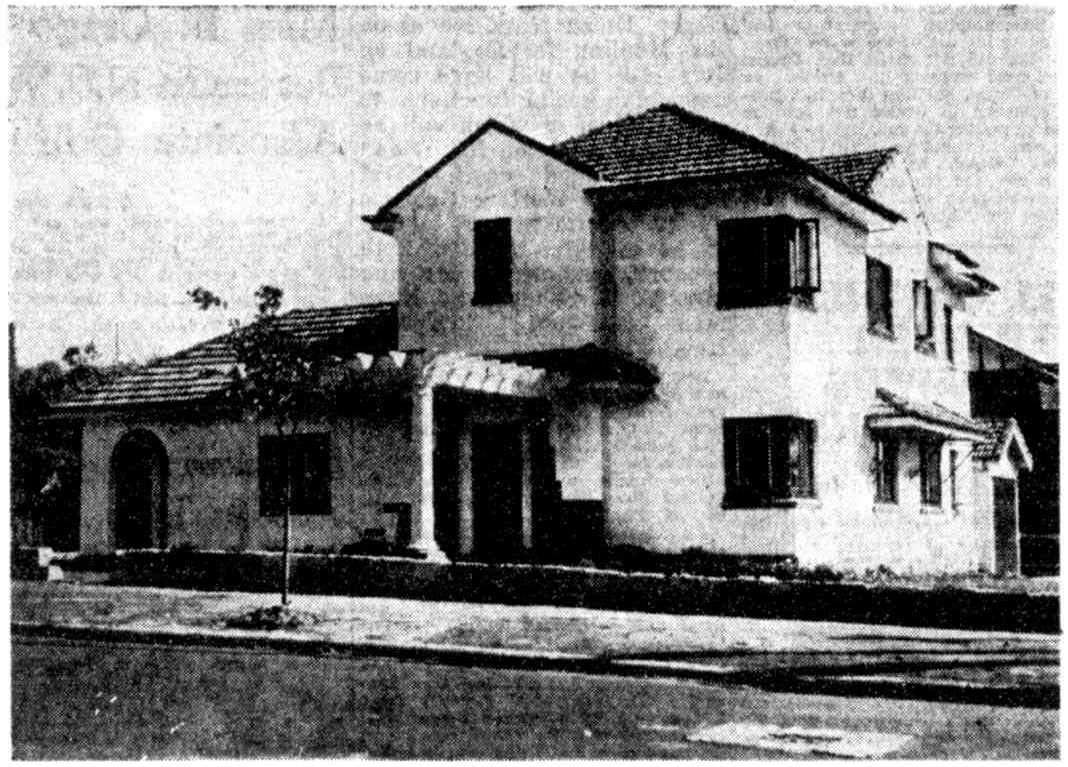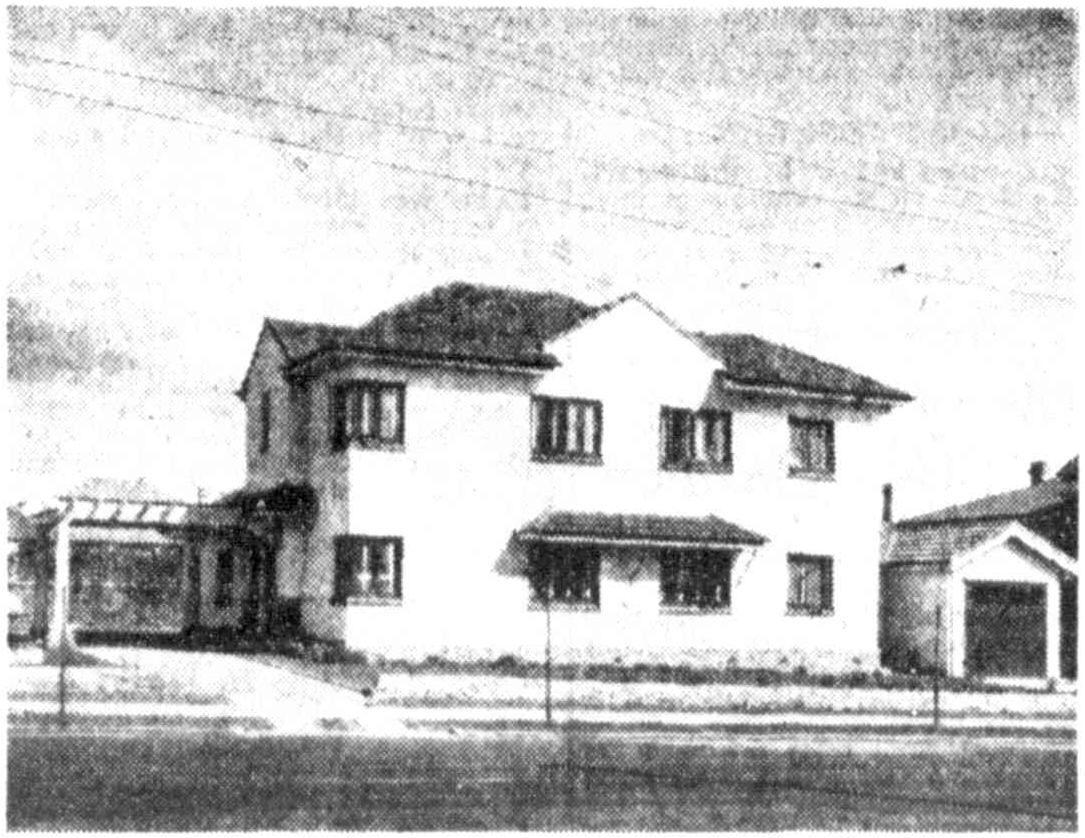Addresses
Type of place
House
Period
Interwar 1919-1939
Style
Mediterranean
Addresses
Type of place
House
Period
Interwar 1919-1939
Style
Mediterranean
This two storey, Mediterranean style house at 1 Oxlade Drive, New Farm was built for newlyweds, Leslie and Betty Dodwell in 1938-1939. Leslie Dodwell was a clerk who served in the AIF during World War II from 1940 to 1947.
The Dodwells engaged Brisbane architect, George Rae, to design their fashionable new home which enjoyed a prestigious location with views of New Farm Park. Rae was a successful young architect known for the many fine blocks of flats he designed during the Interwar period, for example, ‘Greystaines’ at Hamilton and ‘Green Gables’ in Julius Street, New Farm.
Lot plan
L1_RP55337
Key dates
Local Heritage Place Since —
Date of Citation —
People/associations
George Rae (Architect)Criterion for listing
(A) Historical; (D) Representative; (E) AestheticInteractive mapping
Lot plan
L1_RP55337
Key dates
Local Heritage Place Since —
Date of Citation —
People/associations
George Rae (Architect)Criterion for listing
(A) Historical; (D) Representative; (E) AestheticInteractive mapping
History
This two storey, masonry home was built in 1938-39 for Leslie Hassall Dodwell, a clerk, and his wife, Flora (known as Betty), not long after their marriage in September 1938. It is located in a prestigious location on the corner of Brunswick Street and Oxlade Drive with views across Brunswick Street to New Farm Park.
New Farm was subdivided for residential development from the mid-nineteenth century and became an enclave of grand villas on large estates for Brisbane’s elite class of politicians and wealthy businessmen. Notable residents included the Premier, Sir Samuel Griffiths and MLA William Villiers Brown, also a member of the Queensland Parliament. During the building boom of the 1880s, many of these estates were subdivided for more housing, mostly substantial homes still on generous sized lots.
Thomas Wilson, MLA, was another local resident, whose home, ‘Moreland’ on the corner of Brunswick Street and Oxlade Drive (then named Geoffrey Street) included the subject site. ‘Moreland’ was destroyed by fire in 1931. The interwar years brought another wave of subdivision and residential development at New Farm and in September 1938, the Wilson family sold 68 perches on the corner of Oxlade Drive and Brunswick Street to Leslie Hassall Dodwell.
Leslie Dodwell was the son of Alexander Dodwell, a Director of the Canadian Cycle and Motor Company in Queen Street. Leslie Dodwell’s mother, Elsie, was well connected as the daughter of Edwin Tooth, of Hamilton, who established Austral Motors in Brisbane in 1925 and was knighted for his philanthropic efforts in 1957. Alexander and his wife, Elsie, lived in nearby Linden in Moray Street after their marriage in 1905 and were often featured in the social pages of the Brisbane newspapers. Leslie’s brother, Merwyn, was also a resident of New Farm, living at Gwendoban, (built 1933), a substantial Mock Tudor home on the Brisbane River in Maxwell Street.
Leslie and Betty engaged architect George Rae, a successful, young, Brisbane architect, to design them a modern, masonry home on their new block of land. The proposed cost of the house given in the application to Council in August 1938 was £3,000, a very substantial sum for a house at this time, when timber houses cost around £300 to £600 to construct.
The Dodwells’ imposing, two-storied house was under construction by October of the same year and completed by July 1939. Rae’s design included many of the elements of the fashionable Mediterranean style including a terracotta tiled roof, rendered exterior walls, arched doorway and a pergola which sheltered the front entrance. The house included modern features such as a separate garage for a car and in its simplicity of detailing and corner windows it forecast the more austere domestic designs of the 1940s. The Dodwells’ wedding and new home were featured more than once in the newspapers of the time.
George Rae was born in Glasgow in 1901 and arrived in Brisbane in 1914. After studying architecture in Brisbane, he was articled to Brisbane architect, Lange Powell , before moving to Sydney where he continued his studies and was employed by Claude Chambers. From 1924, Rae practised in Brisbane, first with Lange Powell and then as a partner with Atkinson, Powell and Conrad. From 1933 to 1940, Rae had his own architectural practice. He became known for the fine residences and flats he designed in Brisbane during the interwar period, many of which displayed his characteristic use of the Mediterranean style. Examples of his work include ‘Greystaines’ on Kingsford Smith Drive (1934), Casa del Mar at New Farm (1934), Coraki Court at Clayfield (1938-39), ‘Euralla’ at Hamilton (1931) and ‘Green Gables’ at New Farm (1935).
The Dodwells sold the house to Charles and Lois Kordick in 1952. Later in the 1950s, it was converted to flats and two additions constructed. Two carports were added in 1978.
The house has now returned to its former use as a single dwelling. An additional tiled garage and swimming pool were approved for the western side of the property in 2016.
Description
The house at 1 Oxlade Drive, New Farm is a large, two-story masonry building, with elevations to both Oxlade Drive and Brunswick Street. It has a tiled multi-form roof and the exterior walls are rendered in cream stucco with some face brick contrasting trim.
The house has timber framed corner windows, a tiled roof over the entrance and an arched doorway on the ground floor.
An adjoining garage with a tiled roof is located at the rear of the house with car access from Brunswick Street.
A pool and new two storey, rendered garage and office were added on the western side of the house in 2017.
A large hoop pine is located near the front boundary on Oxlade Drive. (This is not visible in 1946 aerial and is not considered to be of cultural heritage significance).
Statement of significance
Relevant assessment criteria
This is a place of local heritage significance and meets one or more of the local heritage criteria under the Heritage planning scheme policy of the Brisbane City Plan 2014. It is significant because:
Supporting images

"Imposing Home at New Farm" The Telegraph, 4 July 1939, p.14

"Imposing Home at New Farm" The Telegraph, 4 July 1939, p.14
References
-
Brisbane City Council Building Cards
-
Brisbane City Council Detail Plans
-
Brisbane City Council Building Register 1938
-
Certificates of Title.
-
Queensland Electoral Roll
-
Donald Watson and Judith McKay, Queensland Architects of the Nineteenth Century, South Brisbane: Queensland Museum, 1994
-
Kennedy, Michael Owen. Domestic Architecture in Queensland Between the Wars. Unpub Thesis. Master of Built Environment. 1989
-
Aerial Photos, QImagery
-
Sunday Mail, 23 Oct 1938, p.24
-
Sunday Mail, 14 Aug 1938, p.31
-
Telegraph, 15 Sept 1938, p.6
-
Telegraph, 4 Jul 1939, p.14
-
Queensland Figaro, 16 Feb 1905, p.15
Citation prepared by — Brisbane City Council (page revised September 2020)


